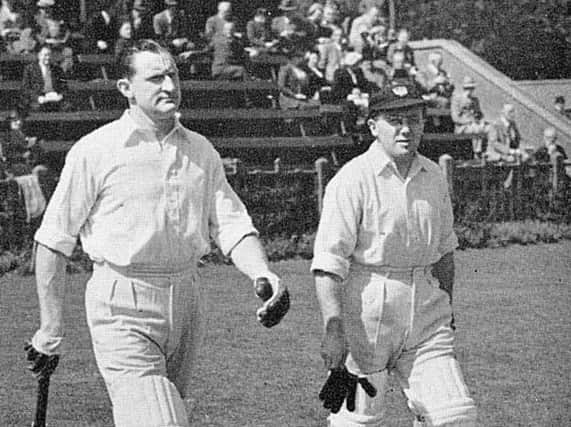Legendary Australian cricketer made lasting mark at Blackpool


Possibly the finest player never to play for his native Australia, while at Stanley Park, Alley very rarely failed to entertain the large crowds that in those days packed into the ground, intent on witnessing his numerous record breaking exploits.
From the Fylde coast, at the relatively late age of 37, this highly competitive Aussie moved to Somerset to begin playing first class cricket, creating even more records in the process.
Advertisement
Hide AdAdvertisement
Hide AdBorn in the Hornsby district of Sydney on February 3, 1919, William Edward Alley – universally known as Bill – was the eldest of six children, his father a local government worker. Because the family home was too small, he was brought up mostly by his grandmother in the city’s Brooklyn district.
Leaving school at 15, he then undertook any number of menial jobs, starting out as a labourer on an oyster farm. He went on to work as a railway fitter’s mate, a blacksmith’s striker and a particularly formidable dance hall bouncer.
He supplemented his meagre earnings by becoming a professional welterweight boxer – winning all 28 eight of his bouts, 17 of them by knock out. A talented southpaw, he once set his sights on having a tilt at the world welterweight title.
First playing for his local side, Alley rose rapidly through the cricketing ranks before, at the age of 26, making his debut for New South Wales in the Sheffield Shield Competition. An intensely cavalier and often unorthodox left-handed batsman, and one of the meanest exponents of medium-paced swing and seam bowling, no one could ever remember him putting down a catch when fielding at gully. Picking up the flight of the ball early, he pulled and hooked with massive power and a total disregard for the coaching manual. Pencilled in for the 1948 tour of England, when in the nets just prior to the team being announced, a vicious drive from team mate, Jock Livingston, knocked him unconscious – badly fracturing his jaw and totally scuppering any chance of cricketing honours.
Advertisement
Hide AdAdvertisement
Hide AdTragedy had struck two years earlier when, having married a local girl, Irene Fisher, his wife subsequently died in childbirth.
In six short months, he also lost both his mother and mother-in-law. With his career in Australia seemingly stalled, he was keen to follow in the footsteps of his fellow dance hall bouncer, Ken Grieves, and to try his luck in England.
However, left with a young son to care for, he found himself in something of a quandary. It was in large part thanks to his sister and brother-in-law – who promised to take responsibility for looking after the child that, in 1948, he was finally able to take the plunge and sign to become the professional for Colne in the Lancashire League. It was Aussie legend, Bill O’Reilly, who urged him to come, and Sid Barnes who paid his fare.
Topping the batting averages in his first year at The Horsfield with 1,151 runs, Alley became only the seventh batsman in the long and illustrious history of the league to top 1,000 runs in a season. Never happier than when able to top up his wages with regular collections from the large crowds, he also chipped in with 86 wickets at 12.00 apiece.
Advertisement
Hide AdAdvertisement
Hide AdAlley would also go on to become the first man in the league to score more than 1,000 runs in five consecutive seasons. Coming close to capturing the league title in his debut season, the club would lose out in a closely-fought final encounter to the eventual champions, Rishton.
In 1952, for the first time in 24 years, successfully overcoming a hitherto all-conquering East Lancs side, Colne triumphed to carry off the prestigious Worsley Cup.
It was while at Colne that, in 1949, Alley met and married Betty Cortman, a telephonist based in Rawenstall. Squeezing in a short honeymoon in Scarborough, Alley then left for a four month tour of India and Pakistan, having been selected for a Commonwealth XI, captained by his New South Wales team mate, Jock Livingston.
With India winning the series by two tests to one with two drawn, the team then proved far too strong for Pakistan, overcoming them in three days. Alley, one of the main run-getters, typically topped 1,000 runs.
Advertisement
Hide AdAdvertisement
Hide AdOn the domestic front, the couple would have two sons, later being joined by Alley’s son from his first marriage, Kenneth. A promising cricketer, while serving in the Army in 1970, Kenneth would die in tragic circumstances, trapped in a tank as it caught fire.
After five years at Colne, in 1953, Alley moved to Stanley Park to join Blackpool, members of the Northern League, formed only 12 months earlier.
Once again his impact was immediate.
In that first season he scored 1,345 runs at an average of 149.6, a Northern League record that lasted for forty one years.